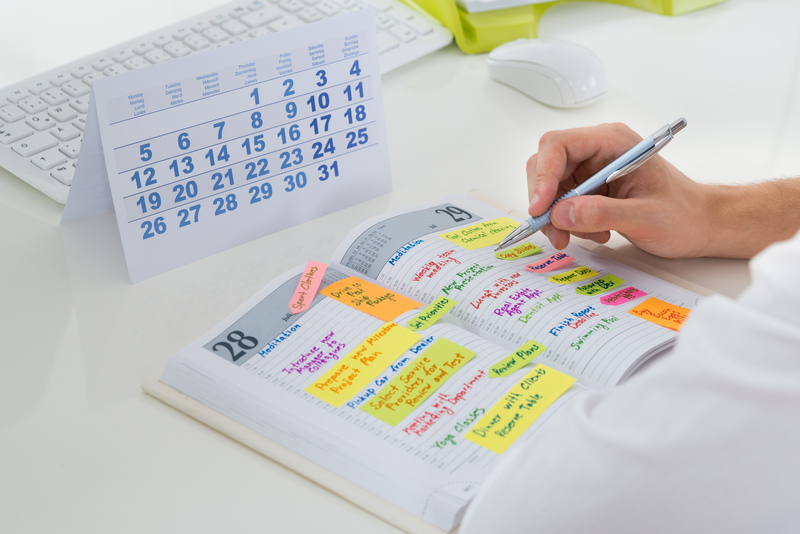Simple Steps to Transport Your Bed and Mattress
Posted on 07/06/2025
Simple Steps to Transport Your Bed and Mattress
Moving your bed and mattress doesn't have to be a daunting task. With proper preparation and knowledge, you can transport your bedroom essentials with ease and minimal hassle. In this comprehensive guide, you will learn the simple steps to transport your bed and mattress safely and efficiently, whether you're moving across town or just down the street.

Why Proper Bed and Mattress Transportation Matters
When it comes to relocating, bed and mattress transportation is often one of the most overlooked tasks. However, improper handling can lead to damage, loss of comfort, and potential health issues due to dirty or deformed mattresses. To ensure that your bed frame and mattress arrive in pristine condition, understanding the right moving techniques is essential.
Benefits of Safe Transportation
- Prevents costly damage to both bed frames and mattresses
- Keeps your mattress clean and sanitary
- Reduces the risk of personal injury during the move
- Prolongs the lifespan of your bedding essentials
Essential Preparations Before Transporting Your Bed and Mattress
Before you start moving your bed and mattress, make detailed preparations for a smooth process. Below are key steps to take before the moving day arrives.
1. Gather the Necessary Tools and Materials
- Mattress bag or plastic wrap: Used to protect your mattress from dirt, moisture, and damage.
- Furniture straps: Helps secure the mattress and bed frame during transit.
- Tool kit: Contains screwdriver, Allen wrench, and pliers for disassembling the bed frame.
- Bubble wrap or moving blankets: Provides cushioning and prevents scratches or dents.
- Stretch wrap or rope: Useful for holding bed parts together.
- Moving dolly: Makes it easier to transport heavy furniture and mattresses.
- Label stickers: Helps you identify bed frame components for reassembly.
- Cleaning supplies: Wipes or sprays for cleaning the bed frame before packing.
2. Measure Doorways, Hallways, and Stairs
Take precise measurements of doorways, hallways, and stairs in both your current and new locations. This will help you plan the best route for transporting your bed and mattress, reducing the risk of scuffed walls or jammed furniture.
3. Clear a Path for Moving
Remove obstacles such as rugs, small furniture, and decorative objects from your moving path. This will make it easier and safer to transport both mattress and bed frame, reducing the risk of accidents or damage.
Step-by-Step Guide: How to Transport Your Bed and Mattress
Once you are fully prepared, it's time to proceed with the actual bed and mattress transportation process. Follow these simple steps for a successful move.
Step 1: Disassemble the Bed Frame
Start by taking apart the bed frame into manageable pieces. Generally, most bed frames consist of:
- Headboard
- Footboard
- Side rails
- Support slats or center support bar
How to disassemble your bed frame:
- Remove bedding and mattress: Take off all bedding and set it aside. Carefully place your mattress on a protected surface.
- Unscrew and detach: Using your tool kit, remove screws and bolts from the headboard, footboard, and side rails.
- Label all parts: As you disassemble, use stickers or tape to label each component. This will make reassembly much easier.
- Store small parts: Place screws, nuts, and washers in a labeled plastic bag and keep them with the bed parts.
Step 2: Clean and Protect the Mattress
Before moving, clean your mattress using a vacuum to remove dust and debris. This will prevent contamination during transit and ensure freshness at your new home.
Next, slide the mattress into a protective mattress bag or wrap it tightly in plastic to shield it from stains, moisture, and damage. Secure the covering with packing tape if necessary.
Step 3: Wrap and Secure the Bed Frame Components
- Wrap each piece with moving blankets or bubble wrap.
- Secure the wrapping with stretch wrap or packing tape.
- Bundle parts together: Larger items like side rails can be bound together for easier transport.
This extra layer of protection guarantees your bed frame stays scratch-free and ready to reassemble upon arrival.
Step 4: Plan the Transportation Method
To successfully transport a mattress and bed frame, you need to select the right vehicle. Here are your main options:
- Moving Truck or Van: The safest and most convenient choice for moving large furniture over any distance.
- Pickup Truck: Suitable for short-distance moves, especially within the same city or neighborhood.
- Professional Movers: Consider this option if you're relocating long-distance or want to avoid heavy lifting.
Step 5: Loading the Mattress and Bed Frame
When loading the mattress: Always stand the mattress upright in the vehicle, ideally along one side. This saves space, prevents bending or creasing, and protects the mattress from damage. Use furniture straps to secure it in place.
For the bed frame: Arrange the disassembled parts flat against the remaining vehicle space, protecting corners and edges with moving blankets. Small items and hardware should be kept in a clearly labeled bag within easy reach for unloading.
Step 6: Unloading and Reassembling at Your New Home
- Carry the mattress with care--always by its side (never folded), and avoid dragging it on the ground.
- Move bed frame parts to the desired room before unwrapping for minimal disruption.
- Reassemble the bed frame following your labels and keeping the hardware close by.
- Remove the mattress cover only when it's ready to be placed on the bed.
- Set up the headboard, rails, and supports first; then add slats or the center bar.
- Test stability before placing the mattress and adding bedding.
Tips to Transport Different Types of Beds and Mattresses
Transporting Memory Foam, Latex, or Hybrid Mattresses
Memory foam and latex mattresses are more susceptible to folding, tearing, and deformation during a move. Never fold these mattresses; instead, keep them flat or upright. If folding is absolutely necessary, check the manufacturer's recommendations to prevent voiding any warranty.
Moving Box Springs, Platform Beds, or Adjustable Bases
- Box Springs: Treat similarly to mattresses--cover and stand on edge for transport.
- Platform Beds: Disassemble large panels, wrap securely, and avoid banging corners during the move.
- Adjustable Bases: Secure all moving parts, unplug electronics, and carefully wrap mechanical components.
Common Mistakes to Avoid When Moving Your Bed and Mattress
- Skipping measurements: Failing to measure doorways or stairways can result in stuck or damaged furniture.
- Not using protective covers: Exposing a mattress or bed frame to dirt, moisture, or rough vehicle surfaces can lead to costly replacements.
- Overloading the vehicle: Cramming items can crush the mattress or bend frame components.
- Dragging the mattress: Always carry beds or mattresses--dragging can tear fabric or damage padding.
- Leaving small parts loose: Lost hardware causes unnecessary delays during reassembly.
Professional Moving vs. DIY: Which Is Best for Your Bed and Mattress?
Choosing between DIY transport and hiring professionals depends on several factors:
- Distance: Local moves are more suitable for DIY, while long-distance relocations may require a full-service moving company.
- Weight and size: Large, heavy beds (such as king size or specialty mattresses) may be too challenging to move alone.
- Budget: DIY moving saves money, but professional movers provide peace of mind and extra protection for valuables.
- Experience: If you have back problems or little moving experience, call a professional moving team for help.
Advantages of Hiring Professionals
- Expert handling and reduced risk of damage
- Insurance coverage for potential accidents or losses
- Convenience and time savings--especially for large, complicated furniture
After the Move: Ensuring Mattress Hygiene and Longevity
Once your bed and mattress are in your new home, here's how to keep them in optimal condition:
- Air out your mattress for a few hours to eliminate odors absorbed during the move.
- Check for bed bugs or pests--particularly if the mattress was transported by professionals or stored en route.
- Inspect for physical damage (tears, stains, loose joints) before using.
- Use a quality mattress protector to prevent future damage or stains.
- Rotate or flip the mattress as recommended to maintain its shape and comfort.

FAQs: Bed and Mattress Moving Questions Answered
Can I move a mattress on the roof of my car?
This is not recommended. Even if you secure it with rope, mattresses are bulky and can easily catch the wind, becoming a hazard. For safety, always use an appropriate moving vehicle.
How do I transport a king size bed or mattress?
King size beds require larger moving trucks or vans. Always disassemble the frame completely and have help for carrying the mattress due to its size and weight.
Is it safe to fold a mattress for moving?
Only some innerspring mattresses allow folding, and even then, it should be temporary. Memory foam and latex mattresses should never be folded as this damages their structure.
How do I keep my mattress clean during a move?
Use a dedicated mattress bag or thick plastic wrap to completely enclose it, keeping out dirt, moisture, and pests.
Conclusion: Make Your Bed and Mattress Move Stress-Free
Moving your bed and mattress can be simple and straightforward with the right preparation and strategy. By following the easy steps to transport your mattress and bed frame outlined above, you'll ensure both safety and peace of mind. Remember to gather the correct tools, protect your furniture, and take your time during both disassembly and reassembly. If in doubt, don't hesitate to ask for help or hire professionals for a hassle-free move.
With these tips, your bed and mattress transport experience will be smooth, efficient, and worry-free--so you can start enjoying a restful sleep in your new home right away!



